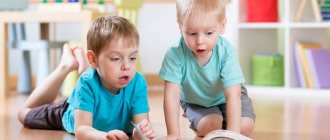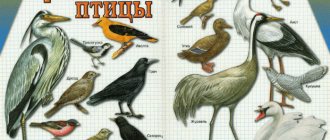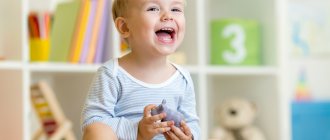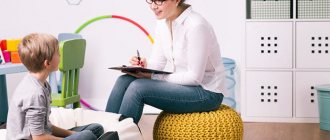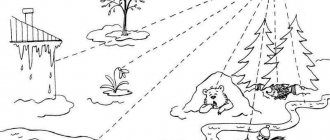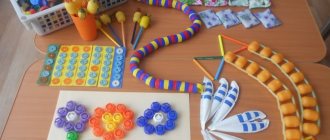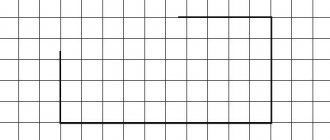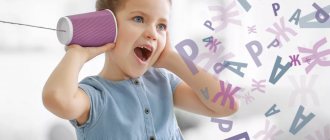During the fourth year of life, children experience one of the most significant leaps in their development. Human speech begins to be of unprecedented interest to them; they actively try to talk, repeating all the sounds that are available to them. It is at this time that parents and teachers should listen carefully, noting whether the characteristics of the child’s speech fit into the norm, and whether a 3-4 year old child requires speech therapy classes.
What should the speech of a 3-4 year old child be like?
Scientists have calculated that at this age a child’s vocabulary ranges on average from 1,500 to 2,000 words. Such calculations are difficult to make at home, but there are several simpler indicators that can easily be used to determine how well a child’s speech development falls within the normal range.
There is no cause for concern if the child:
- actively tries to reproduce all the sounds and words he hears, especially those that are new to him;
- engages in word creation;
- makes simple sentences naming actions (the ball flies, the fish swims, the dog barks);
- tries to compose complex sentences and stories, but at the same time does not speak very clearly and makes many speech errors;
- can talk about himself in the third person;
- enjoys repeating many words after adults, quoting phrases from cartoons;
- does not pronounce all sounds; problems especially often arise with [r], [l], [s] and [w];
- rearranges letters and syllables in words;
- At the same time, he himself understands complex sentences, listens carefully to fairy tales, knows his favorites by heart;
- knows and knows how to say his first and last name, the names of relatives, friends, and the city in which he lives.
The listed signs apply to both boys and girls, although experts say that girls are ahead of boys in speech development by an average of 4-5 months. There are silent children who do not speak in front of strangers, but this does not always mean a deviation from the norm: a sensitive parent usually knows what his baby is really capable of.
At this time, it is important to talk to the child as much as possible, while making sure that your own speech is correct, not to lisp, and to read books to the baby with expression.
Advice from a speech therapist for children 3-4 years old; consultation on speech therapy (middle group)
Breathing exercises will strengthen the child’s immunity
Do you think this is not true? Do you have doubts? Respiratory diseases in children are all too common.
Breathing exercises can generally be an excellent addition to a variety of therapies. With its help, your baby's respiratory system will develop correctly.
In addition, if the child is not healthy, there is no need to stop exercising: breathing exercises will only speed up the healing process. And along the way, you will solve a number of problems, because breathing exercises:
— improves oxygen metabolism in the body;
— stimulates the functioning of the cardiovascular and digestive systems;
- helps the little person master basic self-regulation skills: the baby learns to relax, calm down if he is excited or irritated by something.
And for breathing exercises to become useful, you need to do them correctly:
- inhalation is done through the nose; — the child’s shoulders remain calm (do not rise);
- exhale the air smoothly and for a long time; — the child’s cheeks should not swell (you can control them with your hands at the stage of learning the exercises).
Stop exercising immediately if your child:
- breathes too quickly;
- suddenly turned pale or red;
- complains that his arms or legs are numb;
- His hands began to tremble
. Hyperventilation may have occurred. In this case, ask your baby to fold his palms into a boat, “dip” his face into it, and inhale deeply and exhale into his palms several times (2-3 is usually enough).
Breathing exercises “Swing”
Goal: to strengthen physiological breathing in children.
For a child in a lying position, a light toy is placed on his stomach in the diaphragm area. Inhale and exhale through the nose. An adult pronounces a rhyme:
Swing up (inhale)
Swing down (exhale), Hold on tight, my friend.
Breathing exercises “Tree in the wind”
Goal: formation of a breathing apparatus.
IP: sitting on the floor, legs crossed (options: sitting on your knees or on your heels, legs together). The back is straight. Raise your arms up above your head with an inhalation and lower them down to the floor in front of you with an exhalation, while bending your torso slightly, as if bending a tree.
Breathing exercises “Lumberjack”
Goal: development of smooth, long exhalation.
Stand straight with your feet slightly wider than shoulder-width apart. As you inhale, fold your hands like a hatchet and lift them up. Sharply, as if under the weight of an ax, lower your outstretched arms down as you exhale, tilt your body, allowing your hands to “cut through” the space between your legs. Say "bang." Repeat with your child six to eight times.
Breathing exercises “Angry hedgehog”
Goal: development of smooth, long exhalation.
Stand with your feet shoulder-width apart. Imagine how a hedgehog curls up into a ball when in danger. Bend down as low as possible without lifting your heels from the floor, clasp your chest with your hands, lower your head, exhaling “p-f-f” - the sound made by an angry hedgehog, then “f-r-r” - and this is a satisfied hedgehog. Repeat with your child three to five times.
Breathing exercises “Blow up the balloon”
Goal: train the strength of inhalation and exhalation.
IP: the child is sitting or standing. “Blowing up the balloon” he spreads his arms wide to the sides and inhales deeply, then slowly brings his hands together, bringing his palms together in front of his chest and blows out air - pfft. “The ball has burst” - clap your hands, “the air comes out of the ball” - the child says: “shhh”, stretching out his lips with his proboscis, lowering his hands and settling, like a balloon from which the air has been let out.
Breathing exercises “Leaf fall”
Goal: development of smooth, long inhalation and exhalation.
Cut out various autumn leaves from colored paper and explain to your child what leaf fall is. Invite your child to blow on the leaves so that they fly. Along the way, you can tell which leaves fell from which tree.
Breathing exercises “Geese are flying”
Goal: to strengthen physiological breathing in children.
Slow walking. When you inhale, raise your arms to the sides, when you exhale, lower them down, pronouncing a long sound “g-u-u-u”.
Breathing exercises “Fluff”
Goal: formation of a breathing apparatus.
Tie a light feather to a string. Invite your child to blow on it. It is necessary to ensure that you inhale only through your nose, and exhale through pursed lips.
Breathing exercises “Beetle”
Goal: train the strength of inhalation and exhalation.
IP: the baby stands or sits with his arms crossed over his chest. He spreads his arms to the sides, raises his head - inhale, crosses his arms over his chest, lowers his head - exhale: “huh-uh-uh,” said the winged beetle, I’ll sit and buzz.”
Breathing exercises “In the forest”
Goal: to form correct speech breathing.
Imagine that you are lost in a dense forest. Inhale and exhale say
"aw." Change your intonation and volume and turn left and right.
Repeat with your child five to six times.
Breathing exercises “Wave”
Goal: train the strength of inhalation and exhalation.
IP: lying on the floor, legs together, hands at your sides. As you inhale, your arms rise above
with your head touching the floor, as you exhale, slowly return to the starting position.
Simultaneously with the exhalation, the child says “Vni-i-i-z.” After the child has mastered
For this exercise, speaking is canceled.
Breathing exercises “Hamster”
Goal: development of smooth, long exhalation.
Invite your child to walk a few steps (up to 10-15), puffing out his cheeks like a hamster,
then lightly slap yourself on the cheeks - let the air out of your mouth and walk some more
a little, breathing through your nose.
Breathing exercises “Little Frog”
Goal: to form correct speech breathing.
Place your feet together. Imagine how the little frog jumps quickly and sharply, and
repeat his jumps: squatting slightly, inhaling, jump forward. Having landed,
“croak.” Repeat three to four times.
Breathing exercises “Indian War Cry”
Goal: to form correct speech breathing.
Invite your child to imitate the Indians' war cry: shout quietly, quickly
covering and opening your mouth with your palm. This is a fun element for children that is easy
Breathing exercises “In the forest”
Goal: to form correct speech breathing.
Imagine that you are lost in a dense forest. After inhaling, say “ay” as you exhale. Change your intonation and volume and turn left and right. Repeat with your child five to six times.
Breathing exercises “Wave”
Goal: train the strength of inhalation and exhalation.
IP: lying on the floor, legs together, hands at your sides. As you inhale, raise your arms above your head, touching the floor, and as you exhale, slowly return to their starting position. Simultaneously with the exhalation, the child says “Vni-i-i-z.” After the child masters this exercise, speaking is canceled.
Breathing exercises “Hamster”
Goal: development of smooth, long exhalation.
Invite your child to walk a few steps (up to 10-15), puffing out his cheeks like a hamster, then lightly slap himself on the cheeks - release the air from his mouth and walk a little more, breathing through his nose.
Breathing exercises “Little Frog”
Goal: to form correct speech breathing.
Place your feet together. Imagine how the little frog jumps quickly and sharply, and repeat his jumps: squatting slightly, inhaling, jump forward. When you land, “croak.” Repeat three to four times.
Breathing exercises “Indian War Cry”
Goal: to form correct speech breathing.
Invite your child to imitate the Indians' war cry: shout quietly, quickly covering and opening your mouth with your palm. This is a fun element for children that is easy to repeat. An adult can “manage the volume” by alternately indicating “quieter and louder” with his hand.
Breathing exercises “Pearl divers”
Goal: to strengthen physiological breathing in children.
It is announced that a beautiful pearl lies on the seabed. Anyone who can hold their breath can get it. The child, in a standing position, takes two calm breaths and two calm exhalations through the nose, and with the third deep breath closes his mouth, pinches his nose with his fingers and squats until he wants to exhale.
repeat. An adult can “control the volume” by pointing alternately with his hand
"quieter-louder."
Breathing exercises “Pearl divers”
Goal: to strengthen physiological breathing in children.
It is announced that a beautiful pearl lies on the seabed. He can get her
someone who can hold their breath. A child in a standing position makes two calm
inhale and two calm exhalations through the nose, and with the third deep breath closes the mouth,
pinches his nose with his fingers and squats until he wants to exhale.
How to recognize disorders and when to contact a speech therapist?
The list presented above is general in nature, but if at least three points from it are not characteristic of a child’s speech behavior, this is a reason to think about it.
Here are some signs that may indicate a delay in your child's speech development:
- the pace of his speech is uneven - he sometimes speaks too quickly, sometimes he drawls out his words;
- speaks unintelligibly, only his mother understands him;
- if he speaks in phrases, then not his own, but only those he heard from adults or on TV;
- he himself has difficulty understanding what adults tell him;
- mouth constantly open, like a limp mouth;
- increased salivation not associated with teething.
If one or more signs from this list are present, it is advisable to diagnose the child’s speech development. Perhaps there really is a pathological disorder that requires special treatment, or perhaps the baby just needs speech therapy exercises. But before contacting a speech therapist, you need to show the child to a neurologist, psychiatrist and speech pathologist: they will help determine whether the delay in speech development is associated with disorders of the central nervous system or the problem is only in the pronunciation of sounds. You may also need the help of an audiologist - a specialist who identifies hearing defects. If doctors have not found any physiological reasons for the development of mental retardation, then the child will benefit from sessions with a speech therapist.
Tests to determine pathologies
To quickly respond to changes in the baby’s development, you can conduct simple tests.
- By the fourth year, children can already distinguish the simplest geometric shapes. You need to ask the child to draw a circle. Even the similarity of this figure is a good result. However, if the child does not understand what is wanted from him, or his drawing does not even remotely resemble what is required, the test has not been passed.
- If a child does not show interest in new games and does not assemble a small tower from cubes, development is slow.
- By the age of three, the toddler communicates in short phrases (those who at this age already speak in long sentences are not taken into account). The minimum milestone for speech development by 3-4 years is the simplest phrases. If the child does not pronounce them, you should go to a specialist.
In what cases is it still necessary to contact a speech therapist:
- The baby does not respond to his name and does not understand simple requests.
- Shows no interest in new toys; all his game scenarios follow the pattern.
- He cannot assemble a simple turret or put a large bead on a rope.
- If by the age of three the child does not speak, there were injuries during pregnancy or early development, or there are hereditary diseases.
Types and features of speech therapy classes
Speech therapy sessions can be either individual or group. On the one hand, one-on-one sessions have proven to be more effective, when all the specialist’s attention is directed to a specific child. On the other hand, children feel more comfortable in a group. Most often, a positive result is achieved by alternating these two types of activities: in group, or frontal, classes, children consolidate the skills acquired in individual ones.
Individual sessions
The most important thing for a speech therapist here is to find an approach to the child, to be able to captivate him, to “stir up” him. The baby should feel at ease, play, stick out his tongue in front of the mirror, and repeat after the specialist everything he asks. Therefore, the mood for the lesson is appropriate: it’s all just a game. To learn to pronounce difficult sounds, a child does not even need to know why he came here. For each such sound, the speech therapist has a selection of special game exercises, by performing which the little student imperceptibly improves his speech skills. Breathing exercises, songs, tongue twisters, tongue exercises - all these are effective tools in a specialist’s arsenal.
Group (frontal) classes
If individual speech therapist sessions with children are most often aimed at correcting individual sounds, then frontal sessions involve working with a wider range of deviations in speech development. These can be defects in sound pronunciation, hearing impairment, grammatical problems, and stuttering. Groups are selected small, ideally 7 people; children should be approximately the same age and have similar speech impairments. The lesson is always given some interesting topic, which provides many opportunities to expand children's vocabulary and practice oral speech. For example, in winter, the “New Year” theme is relevant: the room is decorated accordingly, creating a festive, upbeat mood in children, which contributes to the effectiveness of exercises.
As in individual lessons, here a lot depends on the personality of the specialist, on his ability to create the right environment and make children want to express themselves. For children 3-4 years old, for whom the process of socialization is just beginning, it is not easy to create such conditions. Many of them are shy and withdrawn precisely because of their speech impairments. For group speech therapy classes to bear fruit, children must feel confident and free during them.
How are speech therapy classes organized for children 2-3 years old?
Speech therapy classes have a clear structure and include a number of mandatory elements: speech therapy gymnastics, training in proper breathing, developing diction with a speech therapist, developing speech expressiveness, working on intonation, stress, and tempo of speech. Before the start of the lesson, the speech therapist creates a favorable psychological atmosphere and unobtrusively prepares the child for speech therapy work. Speech therapy classes for children 2-3 years old involve the use of a rich arsenal of teaching methods. We use finger games, speech therapy simulation exercises, tasks to develop speech perception, vocabulary and other speech therapy work. The speech therapist uses pictures, educational toys, and various objects as material for lessons. Thanks to effective methods and original forms of delivery, speech therapy lessons for children 2-3 years old are effective.
How specialists work: exercises, games, manuals
One of the most obvious reasons for the incorrect pronunciation of sounds by young children is the imperfection of their speech apparatus. Speech therapy gymnastics helps solve this problem.
There are many fun exercises that children enjoy doing in front of the mirror, repeating after the speech therapist.
- “Window” is the simplest exercise in which the baby must first open his mouth as wide as possible (“it’s hot, open the window!”), and then close it (“it’s cold!”).
- “Brushing your teeth” - the child needs to smile and in this state open his mouth slightly, then run his tongue over the upper and lower teeth, as if with a toothbrush.
- “Cup” - open your mouth again in a smile, stick your tongue out further and give it the shape of a bowl, raising the tip and edges.
- “Fipe” - diligently stretch out your lips, as if with the intention of whistling, while clenching your teeth.
- “Painting the ceiling” - smile, open your mouth slightly and move the tip of your tongue across the sky, as if painting it with a brush.
Children like this kind of gymnastics for the tongue, but it quickly tires them. At the next stage of the lesson, you can move directly to oral speech. Various descriptive games will help with this. For example, the teacher takes out an object or toy from a bag or box and asks the child to name it. Then he asks about the properties and characteristics of the object, pushing the child to describe it (the ball is round, green, small, bouncy). If successful, you can complicate the game: ask the child to put his hand into a bag with a toy and try to tell what it feels like.
The teaching aids include pipes and turntables for breathing exercises, finger toys and exercise machines, sets with tweezers for grasping small parts, tactile bags and boards - there is a very wide choice for professional speech therapists. You can purchase such things for home use, or you can make do with improvised means.
Speech therapy difficulties at 3 years old
A post of whining or desire to understand where to move next. Because they are slowly starting to give up. In a couple of weeks our daughter will turn 3 years old. The current diagnoses are OHP and motor alalia (this diagnosis was made by a speech therapist when passing the district commission for enrollment in a logotype kindergarten, without examination).
I realized that the child had speech problems when he was 2 years old. The child spoke only to Mom and Dad. All! All this means is that apart from these 2 words the child did not say anything, there were not even onomatopoeias, only mooing and pointing gestures. I read forums, listened to doctors: wait, he will speak, everyone develops differently, read books and talk with the child (I was already going crazy from these tips. One of the advisers seriously thought that I was locking my child in a closet at home and stuffing in my mouth water, just not to utter a word?!)
Result at 2.5 years: the same 2 words. A trip to our neurologist, one of the best in the city. At the same time, we go through word of mouth to a speech therapist-defectologist (more on that later). A course of encephobol and pantocalcime was prescribed for 2 months. We underwent a comprehensive examination at the Brain Institute. Osteopathy and manualists. No significant diagnoses were made.
Six months have passed: 15 words and many onomatopoeias have already appeared. Builds short sentences from available words. There is porridge in the mouth, it is impossible to pronounce many vowel sounds. It's obvious that she doesn't even understand how to pronounce them. Only I understand her, and also my husband, but not always. On this basis, both we and the child are freaking out, because we cannot understand each other. She has frequent hysterics against this background. But there is still progress, albeit small.
My main psychological problem is not even that the child does not speak (although that too), but in the following 2 things:
1) Our high-category speech pathologist with extensive experience works with children to induce speech. Classes 2 times a week for an hour (lesson cost 1,800 rubles). I am not present at the classes, I come at the end when they are already doing logo massage and gymnastics. It’s unclear to me what they’ve been doing for the whole hour. Apparently this is from the category of “Paevskaya’s games”, only with pronouncing like colors, textures, properties, verbs, etc. Her entire office is littered with games on various topics, manuals, horse zinc with cereals, sand, etc. I don’t understand the wording “inducing speech.” For the money invested over these six months, I think there is a result, but not colossal. The rest of the speech therapists I contacted said that they won’t take you before 4 years of age, classes before this age are not effective and they say they are extracting money from you.
2) Many will ask the question, well, study at home and save money. I answer: the child can play educational games with me, engage in creativity, add Nikitin squares level 3. Listen to reading books, but as soon as it comes to exactly what is connected with the development of speech, she categorically does not listen to me, refuses to repeat anything and in the end simply goes into another room. I don’t give up trying, but it won’t last even a month.
3) In addition to the speech therapist, the child is engaged in swimming (according to the orthopedist’s indications) and dancing. In total, a huge amount of money from the family budget is spent on all the child’s activities. Of which 2/3 is taken by our speech therapist.
I am constantly tossed from side to side whether these classes are needed now or wait for 4, or let me study with someone at least once; I’m already used to the teacher and at least there are some results.
In a panic and trying to do at least something else, from time to time I want to enroll my child in a course of brain micropolarization or Tomatis, but in the case of the first I am afraid of further harm, in the case of the second I simply don’t believe in the power of music through headphones for 60 thousand.
Has anyone encountered similar characteristics in a child? How did you get out of the situation? How did you study at home? What are the results? Like now? In general, any experience on this topic is interesting.
Ps. I can’t write in the special children’s thread, because according to the rule, I must first pour out my soul in a diary for 20 posts and only then the great moderator will make his decision.
How to work with your child at home?
From parents, first of all, maximum attention is required to the baby, to his interests and discoveries, fears and sorrows. We need to create conditions for him to communicate with the world, take him on walks, show him new places, introduce him to people of different ages. All this broadens the mind and develops the brain, and also strengthens the attachment between children and parents.
The quality of speech is directly influenced by the development of fine motor skills, so any activities with small objects, construction toys, sand, and cereals will be of great benefit in this regard.
You can try special exercises at home. For example, the pronunciation of hissing and whistling sounds is relatively easy to practice on your own, without the intervention of a specialist. As for the sounds [r] and [l], they are considered more difficult to correct, although you can try to “set” them too.
Every parent can reproduce speech therapy gymnastics at home - it will be much more fun and easier for the baby to repeat after his mother than after an unfamiliar aunt. It will take very little time, but will bring great benefits and give pleasant emotions to the participants. For classes, you will need a mirror - preferably a large one, so that the child can freely see both his reflection and the reflection of his mother, performing the exercises “Pipe”, “Cup” and others.
After gymnastics, you can play games with answers to questions, or you can practice pronouncing words containing problematic sounds. If you write these words on cards, it will be more convenient to study. Tongue twisters that are chosen so that the necessary sounds are often repeated in them also work well. It is important to remember that pressure should not be put on the child. Games and activities should not bring him anything but joy and pleasure, otherwise the effect may be exactly the opposite.
When do children need a speech therapist?
The help of a speech therapist-defectologist for preschool children aged 2 to 6 years is necessary when:
- At 2 years old the child did not start talking. Normally, the first words and simple phrases begin to appear between the ages of 1 and 2 years. If a child does not speak at the age of 2, you need to contact an experienced speech therapist to prevent delayed speech development in the child.
- At 3 years old, the child’s speech is unintelligible and incomprehensible to others.
- After 4 years, the child pronounces sounds unclearly, incorrectly coordinates words in a sentence, incorrectly uses the gender of nouns and pronouns (for example, a boy says to himself in the feminine gender: “I did”), and has an insufficient vocabulary.
- By the age of 6, the child has not mastered the system of his native language, distorts words (“kittens”, “dogs”), problems with sound pronunciation persist, and there are difficulties in learning to read.
- The child stutters and speaks with hesitation.
- The child is bilingual (bilingualism), and at the same time pronounces the sounds of the Russian language incorrectly, makes mistakes in the use of words, and the coordination of words in a sentence.
- It is necessary to check whether the child’s speech development corresponds to the age norm.
- The child is diagnosed with “GSD” (general speech underdevelopment), “GRD” (speech development delay), “motor alalia”, “sensory-motor alalia”, “CHD” (mental development delay), “cerebral palsy” (cerebral palsy) , “rhinolalia”, “RDA” (early childhood autism).
